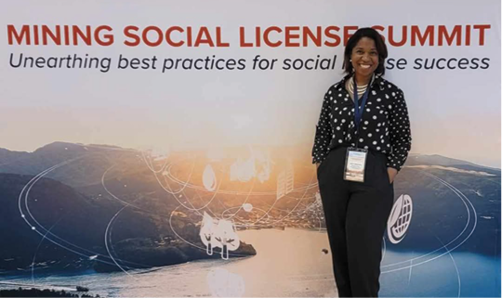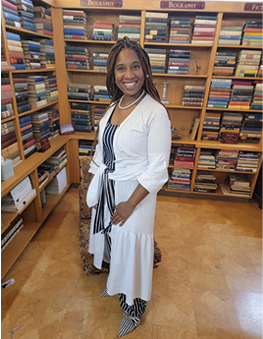
Sharon Laverne Saffold-Harris of the University of Arizona is not your average member of academia. With a megawatt smile and brightness that precedes her, this issue’s Women in Mining spotlight belongs to someone who is working to find answers about the ever-growing influence women have on the resources industry.
Edited by Donna Schmidt
NAM: Sharon, it is so wonderful to talk with you. Please share more about your mining background and what got you interested in it.
Saffold-Harris: In the fall of 2023, I accepted a graduate research associate position with Dr. Angelina Anani, associate professor of Mining and Geological Engineering and a member of the graduate faculty at the University of Arizona, College of Engineering. My responsibility as a graduate researcher was to conduct research regarding the role of gender in mining and its influence or impact on the retention of women in mining.
Before taking the graduate student researcher role, I was unaware that the mining industry was experiencing an employment shortage or that women make up a mere 15% of the mining industry. As a Global Studies researcher who concentrates on gender and women’s studies, I found the data coming from the interviews of women working in mining was so rich with opportunities for the future of women in mining that I was inspired and compelled to change the focus of my graduate research to exploring the roles, responsibilities, and impact of women in mining with a specific focus on the United States and labor practices.
Did you have a mentor along the way?
Dr. Angelina Anani is my mentor. I have benefited significantly from her willingness to engage in cross-departmental collaborations to conduct intersectional and interdisciplinary research that advances existing conversations around employment, safety, and women in mining.
Tell us more about your journey in the mining community to where you stand at this moment.
As a graduate student researcher outside the mining industry, I approach the mining community from an outsider’s perspective. Through my collaboration with my mentor, Dr. Anani, a respected insider within the mining community, I have conducted in-depth interviews with women working in mining. Analyzing these interviews from an external viewpoint allows me to uncover fresh perspectives on existing challenges within the industry.
While I am uniquely positioned outside the community, I see this as an opportunity to contribute valuable insights into gender-based employment concerns and how they influence employee attraction and retention.

How do you feel about the place of women in mining today, especially over the last decade or two, and how it has evolved? What still needs to be done?
The research by Dr. Angelina Anani, Dr. Corey Abramson, Dr. Kray Luxbacher, Julia Potter, and myself aims to understand women’s place in mining and the challenges and opportunities that aid in attracting and retaining women. I will share the research results at the 2025 SME MINEXCHANGE meeting in Denver, Colo., this February at the Women of SME Breakfast, where I am giving the keynote presentation entitled “Empowering and Retaining Women in the Mining Industry” and later another presentation entitled “Blind Spot or Not: Mining Gets Better When We Are Better.”
Mining education and training is a key issue. Can you elaborate on this from your perspective?
Mining exemplifies an interdisciplinary field that fosters collaboration across sciences, engineering, and humanities. Corporations and universities can drive progress by partnering with innovative, technology-driven STEAM pipeline programs, beginning at the middle school level, to equip and inspire the next generation of talent.
How do we as an industry make what appears to be an industry-wide shortage better?
The shrinking labor pool for mining is a significant challenge, but it also presents an opportunity for the industry to modernize and evolve. By addressing the root causes and adapting to workforce expectations, mining companies can rebuild their talent pipeline and secure long-term sustainability.
